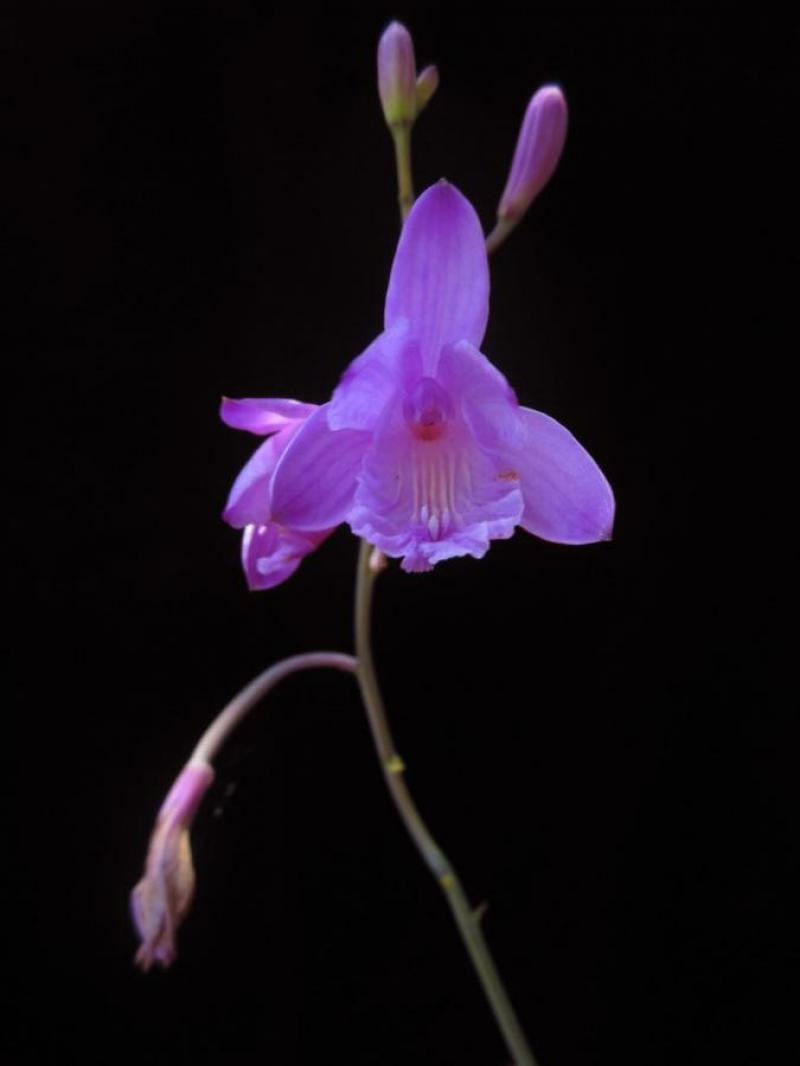Bletia patula
Also known as: The Wide Open Bletia or Bletia patula var. alba Haitian Pine Pink in the subfamily: Epidendroideae
Native to: Cuba Puerto Rico
General Information
The Wide Open Bletia is a warm to hot growing lithophytic orchid belonging to the sub family Epidendroideae native to Cuba and Puerto Rico.
Plant Description
Grows to 60cm. Each new growth has numerous erect lance shaped leaves that grow to 4.5-60cm long. Pseudobulbs grow to 5cm
Flowers
Numerous blossoms appear during Summer
Blooming Season
- Summer
Substrate(s)
- Coarse
- Charcoal
- Spaghnum Moss
- Perlite
- Sand
Care Notes
This orchid goes into a dormancy phase during winter, during this phase it is best not to provide water unless the plant is starting to look thirsty. The lack of water increases the chance of flowering in spring, and also reduces the likelihood of any rot forming. Do not resume watering until new growth has appeared and is growing strongly.
Often a period of intense growth occurs after dormancy. During this time the amount of light, water and fertiliser the plant receives will directly impact the amount of growth that occurs during this time, and in the case of seedlings, will reduce the time required to reach maturity.
It's recommended to heavily reduce the water amount at the middle to end of autumn to trigger dormancy. Leaves on older bulbs will begin to drop during this time while the newer bulbs continue to mature until terminal leaves appear at the tip of the pseudobulbs.
Repotting can be done any time of the year though it's best to do it in early spring when new growth is appearing as this also means new roots will appear to help the plant anchor into the new media and offset any damage to established roots during the repotting process.
Climate
Grows at low to high elevations. Rainfall ranges from 64mm to 168mm per day, heaviest in June and lightest in February. Humidity ranges from 74% to 80%, highest in August and lowest in February. Temperature ranges from 18C to 27C, highest in August (21C to 27C) and lowest in February (18C to 24C).
Watering
These orchids are sensitive to excessive watering and should only be watered when they look thirsty. Water infrequently and ensure that the roots are dry before watering. Keep an eye on them especially during hot weather as overwatering can lead to rot, whereas underwatering may result in wilting or shriveling, which while unattractive, will not kill the plant.
Fertiliser
These plants thrive on fertiliser, especially during periods of growth. Liquid fertiliser can be applied at the recommended strength, augmented with manure pellets or other quickly degradable fertiliser, applied away from the base of the plant, during periods of strong growth that occurs in the middle of the growth season.
Do not fertilise during the dormant period. Avoid using slow release fertiliser that breaks down for longer than 3 months, if using apply only after dormancy when new shoots have developed noticably, applied 4-5 pellets per cup (250ml) of media.
They can benefit from a high phosphate fertiliser leading up to flowering season, and by a high nitrogen fertiliser when new growth appears.
Use balanced fertiliser during Spring and Summer. Fertiliser can be applied heavily year round. Use a high Nitrogen fertiliser during Spring and Summer. Use a high Phosphorous fertiliser during Summer.Potting
Use water retentive media such as moss to prevent roots from drying out quickly Repotting is best done annually.









